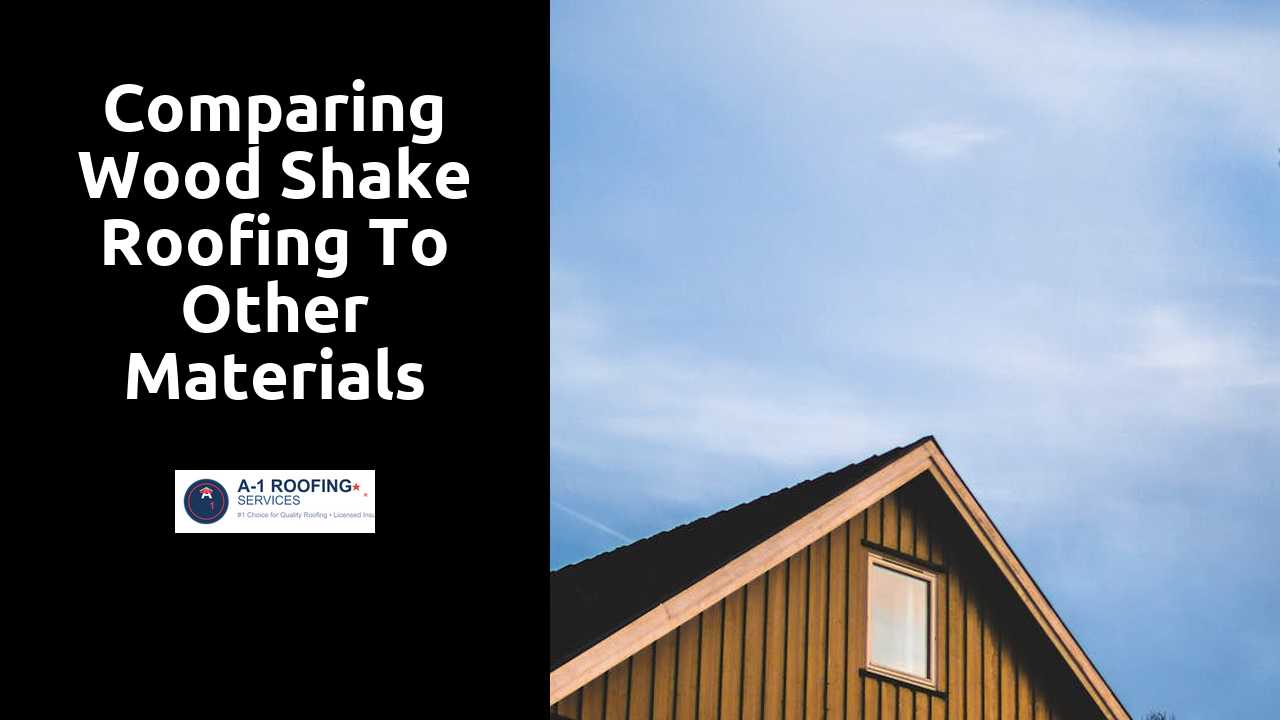
Comparing Wood Shake Roofing to Other Materials
Table Of Contents
Climate Suitability for Roofing Materials
Different roofing materials exhibit varied performance based on climate conditions. For instance, asphalt shingles are often favored in regions with moderate weather. They offer good resistance to wind, rain, and UV exposure. On the other hand, metal roofing can withstand heavy snowfall and high winds, making it ideal for areas prone to severe weather events. In contrast, wood shake roofing is more suited for temperate climates due to its susceptibility to moisture damage in extremely wet regions.
Wood shake roofs can expand and contract with seasonal changes. This characteristic allows them to handle temperature fluctuations effectively. However, in humid or excessively rainy climates, wood shakes may require more maintenance to prevent rot and mold. Additionally, homeowners in arid zones may find wood shakes an attractive choice for their natural aesthetics, provided they are treated to improve their longevity. Understanding how roofing materials perform under specific weather conditions is crucial for making an informed selection.
Continue to read this blog post for more great tips.
How Wood Shake Performs in Various Weather Conditions
Wood shake roofing exhibits a unique set of characteristics that affect its performance in diverse weather conditions. In dry climates, wood shake can withstand high temperatures and resist the warping and cracking that often plague other materials. However, prolonged exposure to intense sunlight can lead to fading and reduced longevity. In areas with heavy rainfall or snowfall, the ability of wood shake to shed water is crucial; it is designed to allow for good drainage, but if not properly maintained, it may experience issues such as mold or mildew growth.
When it comes to wind resistance, wood shake roofs can be susceptible to damage during severe storms. Strong winds may lift or dislodge individual shakes, especially if they were not installed correctly. On the other hand, these roofs can provide excellent insulation, which is beneficial in both hot and cold climates. This insulation property contributes to energy efficiency, reducing heating and cooling costs over time. Proper installation and routine maintenance are essential to ensure that wood shake roofs retain their integrity across varying weather conditions.
Environmental Impact of Roofing Materials
The environmental impact of roofing materials encompasses various factors, including resource extraction, production methods, and end-of-life disposal. Traditional materials like asphalt shingles and metal roofing often require significant energy during manufacturing. This energy consumption contributes to overall carbon emissions, raising concerns about their long-term ecological footprint. Wood shake, sourced from naturally renewable resources, offers an alternative that can be more environmentally friendly when properly managed. Sustainable forestry practices can mitigate potential deforestation impacts, ensuring that wood shake remains a viable option for eco-conscious builders.
Another crucial aspect of roofing materials is their effect on energy efficiency and building performance. Some roofing options reflect heat or provide insulation, impacting the overall energy consumption of a home. Wood shake can offer decent thermal performance, but its efficacy largely depends on the quality of installation and maintenance. The lifespan of roofing materials also plays a significant role in their environmental impact. Materials that last longer reduce the frequency of replacement, thus minimizing waste. By considering these factors, homeowners can make informed choices that align with their environmental values.
Sustainability Considerations for Wood Shake
Wood shake roofing offers a natural aesthetic that appeals to many homeowners. Its primary material, wood, is derived from forests that can be sustainably managed. When sourced responsibly, the harvesting of wood contributes to a renewable cycle. Certain certifications ensure that products come from well-managed forests, thus minimizing the ecological impact. Additionally, the lifespan of wood shakes can be extended through proper maintenance, further decreasing the frequency of replacements and waste.
The environmental footprint of wood shake roofing is affected by its insulation properties. Wood inherently has insulating qualities that can improve energy efficiency in homes. This can lead to reduced heating and cooling costs over time. However, the installation process requires careful consideration of the waste produced during cutting and fitting. Choosing products manufactured with environmentally-friendly treatments can mitigate potential hazards, ensuring that the benefits of wood shake roofs align with sustainable building practices.
Installation Process of Wood Shake Roofing
The installation of wood shake roofing requires careful planning and a skilled approach. Roof decking needs to be properly prepared to ensure a secure foundation for the shakes. Specific guidelines outline the spacing and alignment of the shakes during installation to promote optimal water runoff and prevent damage. Each shake must be carefully positioned to create an even surface while allowing for natural expansion and contraction caused by temperature changes.
The process can be labor-intensive, often taking longer than that of more contemporary materials like asphalt shingles. Experienced roofers are typically needed to ensure the shakes are installed correctly and meet local building codes. Specialized tools may be required, adding to the complexity of the project. While the final result offers an aesthetically pleasing roof, the time investment in install quality needs to be balanced against available resources and homeowner expectations.
Comparing Installation Time and Complexity
The installation of wood shake roofing typically requires more time and skill compared to other materials, such as asphalt shingles. Each shake needs to be carefully installed to ensure proper spacing and alignment. This meticulous process can lead to a longer installation timeframe, especially on larger roofs. Labor costs may also increase due to the necessity for experienced professionals who are familiar with the intricacies of working with wood shakes.
In contrast, materials like metal or asphalt can often be installed more quickly due to their lighter weight and standardized sizes. These alternative roofing options might allow for faster installation, which can be appealing for homeowners seeking to minimize disruption. However, while speed may be advantageous, it’s essential to consider the trade-offs in longevity and maintenance requirements, which could influence overall costs in the long run.
Related Links
The Aesthetic Appeal of Wood Shake Roofing in Home DesignCommon Issues and Repairs for Wood Shake Roofs